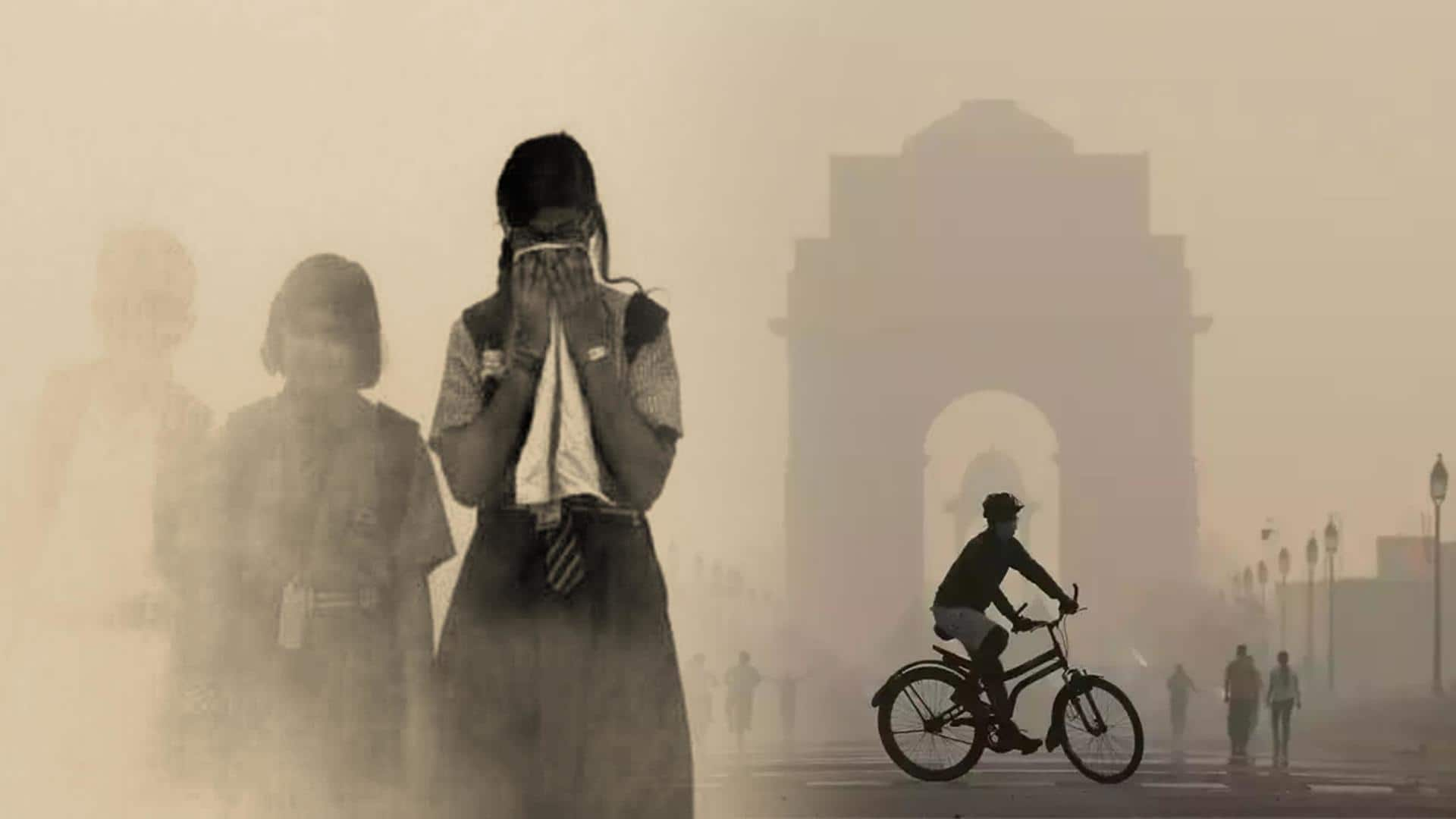
Primary schools reopen as Delhi remains under thick smog blanket
What's the story
Delhi's air quality again deteriorated on Wednesday as Delhiites woke up to a thick smog-covered morning with people gasping for fresh air.
The overall air quality index (AQI) of the national capital deteriorated to 339 from 321 on Tuesday, as per the new data from the System of Air Quality and Weather Forecasting and Research (SAFAR).
Context
Why does this story matter?
Delhi is one of the most polluted cities in the world, posing a significant health threat for its almost three crore citizens.
Every year, Delhi's AQI turns hazardous during winter due to stubble burning, vehicular and industrial pollution, etc.
As per Delhi Pollution Control Committee's analysis from 2021, people breathe the worst air in the capital between November 1 and 15.
Pollution numbers
AQI drops in Delhi-NCR
Meanwhile, numerous parts of the Delhi-NCR recorded an overall drop in the (AQI).
For example, Gurugram recorded 338 AQI (very poor category), while Noida's AQI was 371 (very poor category) on Wednesday morning.
The air quality in the capital is expected to deteriorate further as the day progresses amid unfavorable meteorological conditions.
Twitter Post
Tweet showing today's AQI data
दिल्ली-NCR में हवा की गुणवत्ता लगातार खराब हो रही है।
— ANI_HindiNews (@AHindinews) November 9, 2022
नोएडा में वायु गुणवत्ता सूचकांक (AQI) 371 'बहुत खराब' श्रेणी में है, गुरुग्राम में 338 'बहुत खराब' श्रेणी में और दिल्ली का AQI 339 पर 'बहुत खराब' श्रेणी में है। pic.twitter.com/3XKfZbUaSg
Primary schools
Delhi schools reopen from today
While Primary schools in Delhi reopened, outdoor activities too resumed for all classes on Wednesday.
Amid the high pollution levels, the government of Delhi declared additional measures on November 4.
These included closing primary schools and work-from-home for 50% of its employees.
Furthermore, schools have also enforced a few precautions to protect students from pollution.
Details
What AQI is healthy for people?
According to the Central Pollution Control Board (CPCB), an AQI between 0 and 50 is considered to be "good," and anything between 51 and 100 is "satisfactory."
An AQI between 101 to 200 is deemed "moderate," with 201-300 and 301-400 AQI considered "poor" and "very poor," respectively.
However, anything between 401 and 500 is categorized as "severe" when breathing becomes tough.